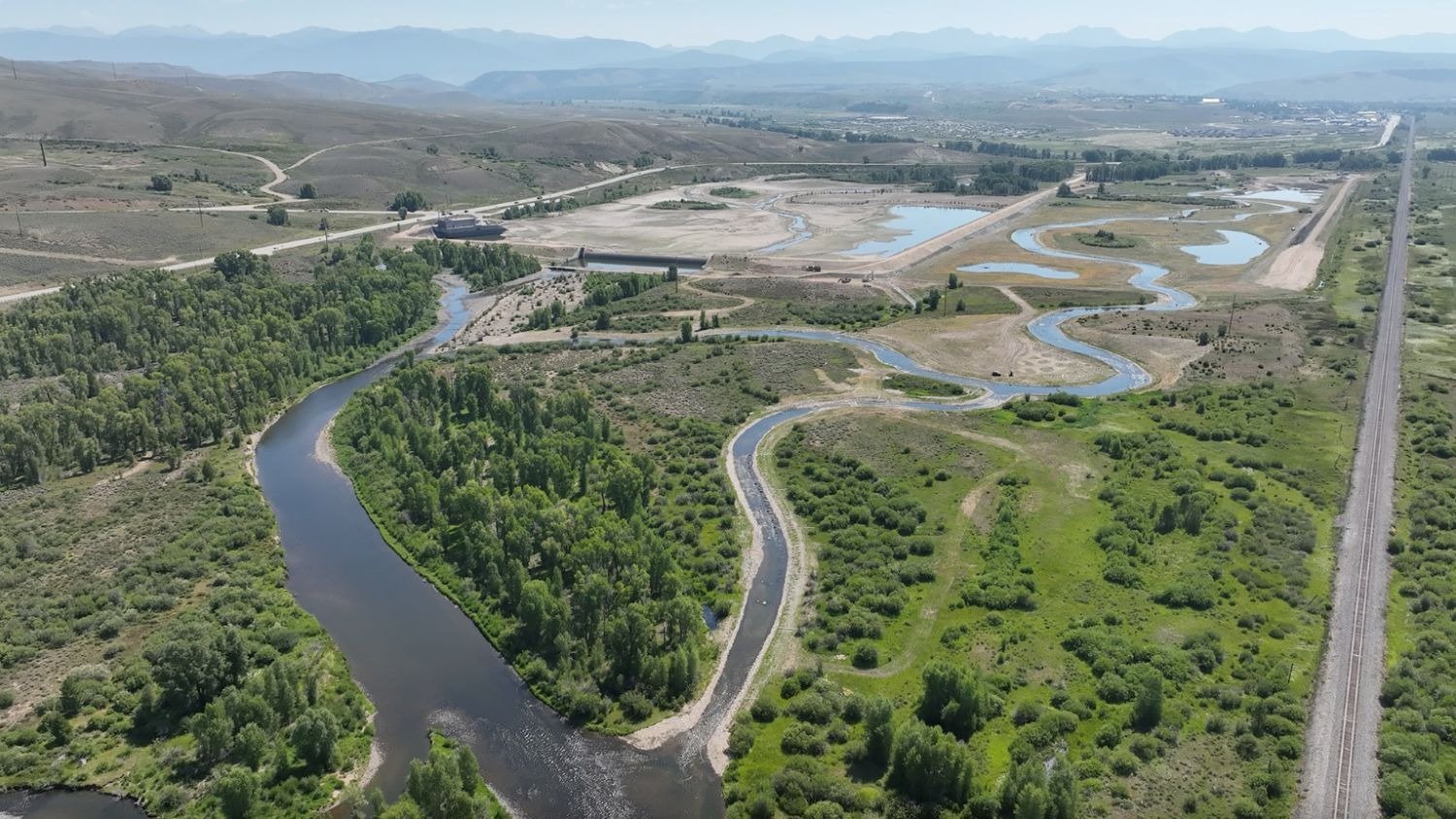Drilling on Roan could negatively affect wildlife
Trout Unlimited is concerned that "development could result in impacts that would severely harm or even wipe out the sensitive populations of Colorado River cutthroat trout on the Roan," said Corey Fisher, energy field coordinator for Trout Unlimited. http://www.gjsentinel.com/hp/content/sports/stories/2007/11/14/111407_db_OUT_roan_WWW.html
By DAVE BUCHANAN
The Daily Sentinel
Wednesday, November 14, 2007
Bruce Gordon banked his small plane and stared down at a line of drill pads marching across the top of the Roan Plateau. Gordon's attention was fixed at the sight of the six scars on the plateau's winter-bare landscape, an umbilical road tying them together like knots on a rope, each one edging along an unnamed ridge toward the westernmost edge of the Naval Oil Shale Reserve.
"I can't believe it," said Gordon, the lead pilot and president of EcoFlight, a wildlands conservation group based in Aspen. "I flew over here earlier this summer and there's so much more development now. It's like a land rush."
Gordon was leading one of his group's semi-regular trips across the Roan Plateau, giving various public groups the rare opportunity to see first-hand the level of development happening up there.
As energy development continues to ravage parts of western Colorado, and in particular creep closer to the still-unmarked top of the Roan Plateau, more voices are expressing opposition to the Bureau of Land Management's energy leasing policies.
"The BLM is becoming a single-use agency," said Ron Velarde, northwest region manager for the Colorado Division of Wildlife. "I don't blame the energy companies, I blame the BLM for letting this happen on our public lands."
Trout Unlimited is concerned that "development could result in impacts that would severely harm or even wipe out the sensitive populations of Colorado River cutthroat trout on the Roan," said Corey Fisher, energy field coordinator for Trout Unlimited. He quoted a BLM analysis that said effects could be irreversible, "especially those that eliminate genetically unique resources ... such as genetically pure Colorado River cutthroat trout."
While most of the drilling around and on the Roan Plateau is occurring on private land, some is being done on public lands around the base of the plateau. Some interests have written off the bottom of the cliffs as a quasi-sacrifice zone to energy development, but the DOW is quick to differ.
"The base of the plateau is critical (big game) winter range," DOW spokesman Randy Hampton told Daily Sentinel reporter Bobby Magill. "If (the energy companies) hammer the bottom, there won't be any wildlife on top."
Still, much of the focus now is on preserving what little unmarred habitat remains on the top of the plateau. The federal lands up there haven't yet been leased, although that may occur as soon as late next summer.
Wildlife managers, hunters, anglers and conservationists all know that once the BLM opens the plateau to drilling, the effects from development will forever change the Roan Plateau.
The best option, obviously, would be to disallow any energy development in the still untouched parts of the Roan, but that's unlikely to happen.
What critics of the drilling would like to see is moderation, a slow staging of the development so effects could be properly addressed. Stipulations and restrictions could address such problems as controlling runoff, habitat fragmentation, and loss of public access before they happen.
And, Velarde emphasized, these are public lands, no matter how often that point is overlooked by pro-development interests.
However, once the development begins, the constant traffic, noise and disturbance compromise wildlife and recreational uses to where the land becomes a industrial zone and little else.
Part of the 73,600 acres of federal land on the plateau won't be developed, said BLM spokesman David Boyd. Some of it is too steep or in riparian areas and some of it is managed with NSO (no surface occupancy) restrictions.
"Nothing on the top of the plateau is closed to leasing but a little less than half of it is NSO," Boyd said. That means in order to extract the gas, a company has to use off-site directional drilling.
Other restrictions Boyd listed from the BLM's Roan management plan include "staging" the development along the ridge lines and making sure one well pad is finished and reclamation is under way before another pad can be started.
Of the leasable federal lands, approximately 34,758 acres, only 1 percent can be disturbed at any one time, Boyd said.
"We think most of the development will be accessible by existing roads but some of the roads probably will have to be improved," Boyd said. "We think this will motivate them to reclaim things more quickly."
But it's the cumulative effects that cause the most concern for sportsmen and conservationists.
It's long-lasting effects on water, wildlife and air quality. A clear day is rare in western Garfield County because of the dusty haze from constant traffic on gravel and dirt roads. A glance last week at upper Parachute Creek revealed clouds of dust reminiscent of nuclear bomb tests 50 years ago.
Uncontrolled runoff from well pads and roads could damage or destroy isolated populations of cutthroat trout, especially if development reaches down the sides of the ridges.
"The key is to protect the watersheds from ridge top to ridge top," Fisher said. "Gas development (currently) is not precluded in headwaters of the (cutthroat) stream reaches."
Velarde said the 1 percent disturbance limit and requiring mitigation on pads before others are built might soothe some of the DOW's concerns.
"But if they are able to drill all over the Roan Plateau, we have problems," he said.
A provision introduced by Reps. Mark Udall and John Salazar in the House-approved version of the 2007 Energy Bill includes NSO restrictions across the top of the plateau while allowing off-site (directional) drilling to tap the resources below.
As Gordon's small plane flew across the plateau's well-drilled south face, his guests looked down on a couple of new, biggie-sized well pads at the base of the cliffs, where two rigs were working side-by-side. Someone remembered that Williams Energy RMT recently announced its plans to start cluster drilling.
Gordon sighed and headed his plane for home.
"It's a cluster all right," he observed.







